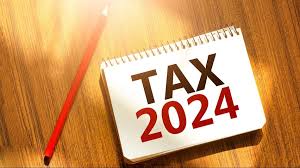Real estate depreciation can save you money at tax time
Real estate depreciation is an important tool for rental property owners. It allows you to deduct the costs of buying and improving a property over its useful life and lowers your taxable income in the process.
KEY TAKEAWAYS
- Rental property owners use depreciation to deduct the costs of buying and improving a property.
- Depreciation starts as soon as the property is placed in service or available to use as a rental.
- Most residential rental property is depreciated at a rate of 3.636% each year for 27.5 years.
- Only the value of the building can be depreciated; you can’t depreciate land because it will never be “used up.”
Tax Write-Offs
Investing in rental property can prove to be a smart financial move. For starters, a rental property can provide a steady source of income while you build equity and the property (ideally) appreciates. There are also tax benefits. You can deduct your rental expenses from any rental income you earn, thereby lowering your tax liability.1 Most rental property expenses, including mortgage insurance, property taxes, repair and maintenance expenses, home office expenses, insurance, professional services, and travel expenses related to management are deducted in the year you spend the money.
Real Estate Depreciation
Another key tax deduction—the one for depreciation—works differently. Depreciation is the process used to deduct the costs of buying and improving a rental property. Rather than taking one large deduction in the year you buy (or improve) the property, depreciation distributes the deduction across the useful life of the property. The Internal Revenue Service (IRS) has very specific rules regarding depreciation, and if you own rental property, it’s important to understand how the process works.2
Which Property Is Depreciable?
According to the IRS, you can depreciate a rental property if it meets all of these requirements:
- You own the property (you are considered to be the owner even if the property is subject to a debt).
- You use the property in your business or as an income-producing activity.
- The property has a determinable useful life, meaning it’s something that wears out, decays, gets used up, becomes obsolete, or loses its value from natural causes.
- The property is expected to last more than one year.
Even if the property meets all of the above requirements, it can’t be depreciated if you placed it in service and disposed of it (or no longer use it for business use) in the same year. Land isn’t considered depreciable since it never gets “used up.”2 And in general, you can’t depreciate the costs of clearing, planting, and landscaping, as those activities are considered part of the cost of the land.
When Does Depreciation Start?
You can begin taking depreciation deductions as soon as you place the property in service or when it’s ready and available to use as a rental.2 Here’s an example: You buy a rental property on May 15. After working on the house for several months, you have it ready to rent on July 15, so you begin to advertise online and in the local papers. You find a tenant, and the lease begins on Sept. 1. As the property was placed in service—that is, ready to be leased and occupied—on July 15, you would start to depreciate the house in July, and not in September when you start to collect rent.
You continue to depreciate the property until one of the following conditions is met:
- You have deducted your entire cost or other basis in the property.
- You retire the property from service, even if you have not fully recovered its cost or other basis. A property is retired from service when you no longer use it as an income-producing property—or if you sell or exchange it, convert it to personal use, abandon it, or if it’s destroyed.
You can continue to claim a depreciation deduction for property that’s temporarily “idle” or not in use. If you make repairs after one tenant moves out, for example, you can continue to depreciate the property while you get it ready for the next.
How to Calculate Depreciation
Three factors determine the amount of depreciation you can deduct each year: your basis in the property, the recovery period, and the depreciation method used.
Any residential rental property placed in service after 1986 is depreciated using the Modified Accelerated Cost Recovery System (MACRS), an accounting technique that spreads costs (and depreciation deductions) over 27.5 years. This is the amount of time the IRS considers to be the “useful life” of a rental property.
While it’s always recommended that you work with a qualified tax accountant when calculating depreciation, here are the basic steps:
- Determine the basis of the property: The basis of the property is its cost or the amount you paid (in cash, with a mortgage, or in some other manner) to acquire the property. Some settlement fees and closing costs, including legal fees, recording fees, surveys, transfer taxes, title insurance, and any amount the seller owes that you agree to pay (such as back taxes), are included in the basis. Some settlement fees and closing costs can’t be included in your basis. These include fire insurance premiums, rent for tenancy of the property before closing, and charges connected to getting or refinancing a loan, including points, mortgage insurance premiums, credit report costs, and appraisal fees.3
- Separate the cost of land and buildings: As you can only depreciate the cost of the building and not the land, you must determine the value of each to depreciate the correct amount. To determine the value, you can use the fair market value of each at the time you bought the property, or you can base the number on the assessed real estate tax values. Say you bought a house for $110,000. The most recent real estate tax assessment values the property at $90,000, of which $81,000 is for the house and $9,000 is for the land. Therefore, you can allocate 90% ($81,000 ÷ $90,000) of the purchase price to the house and 10% ($9,000 ÷ $90,000) of the purchase price to the land.
- Determine your basis in the house: Now that you know the basis of the property (house plus land) and the value of the house, you can determine your basis in the house. Using the above example, your basis in the house—the amount that can be depreciated—would be $99,000 (90% of $110,000). Your basis in the land would be $11,000 (10% of $110,000).
- Determine the adjusted basis, if necessary: You may have to make increases or decreases to your basis for certain events that happen between the time you buy the property and the time you have it ready for rental. Examples of increases to basis include the cost of any additions or improvements that have a useful life of at least one year made before you place the property in service, money spent to restore damaged property, the cost of bringing utility services to the property, and certain legal fees. Decreases to the basis can be from insurance payments you receive as the result of damage or theft, casualty loss not covered by insurance for which you took a deduction, and money you receive to grant an easement.2
Which System to Use
The next step involves determining which of the two MACRS applies: the General Depreciation System (GDS) or the Alternative Depreciation System (ADS). GDS applies to most properties placed in service, and in general, you must use it unless you make an irrevocable election for ADS or the law requires you to utilize ADS.2 ADS is mandated when the property:
- Has a qualified business use 50% of the time or less
- Has a tax-exempt use
- Is financed by tax-exempt bonds
- Is used primarily in farming
In general, you’ll use GDS unless you have a reason to employ ADS. Again, it’s recommended that you consult a qualified tax accountant, who can help you determine the most favorable way to depreciate your rental property.
Once you know which MACRS system applies, you can determine the recovery period for the property. The recovery period using GDS is 27.5 years for residential rental property.2 If you’re using ADS, the recovery period for the same type of property is 30 years for property placed in service after Dec. 31, 2017, or 40 years if placed in service prior to that.
Next, determine the amount that you can depreciate each year. As most residential rental property uses GDS, we’ll focus on that calculation.
For every full year a property is in service, you depreciate an equal amount: 3.636% each year as long as you continue to depreciate the property. If the property was in service for less than one year (for example, you bought a house in May and began renting it in July), you would depreciate a smaller percentage that year, depending on when it was put in service. According to the IRS Residential Rental Property GDS table, that is:4
| January | 3.485% |
| February | 3.182% |
| March | 2.879% |
| April | 2.576% |
| May | 2.273% |
| June | 1.970% |
| July | 1.667% |
| August | 1.364% |
| September | 1.061% |
| October | 0.758% |
| November | 0.455% |
| December | 0.152% |
For example, take a house that has a basis of $99,000 and that was put into service on July 15. For the first year, you’ll depreciate 1.667%, or $1,650.33 ($99,000 x 1.667%). For every year thereafter, you’ll depreciate at a rate of 3.636%, or $3,599.64, as long as the rental is in service for the entire year. Note that this figure is essentially equivalent to taking the basis and dividing by the 27.5 recovery period: $99,000 ÷ 27.5 = $3,600. The difference stems from the first year of partial service.
How Much Does Depreciation Reduce Tax Liability?
If you rent real estate, you typically report your rental income and expenses for each rental property on the appropriate line of Schedule E when you file your annual tax return. The net gain or loss then goes on your 1040 form. Depreciation is one of the expenses you’ll include on Schedule E, so the depreciation amount effectively reduces your tax liability for the year. If you depreciate $3,599.64 and you’re in the 22% tax bracket, for example, you’ll save $791.92 ($3,599.64 x 0.22) in taxes that year.
The Bottom Line
Depreciation can be a valuable tool if you invest in rental properties, because it allows you to spread out the cost of buying the property over decades, thereby reducing each year’s tax bill. Of course, if you depreciate property and then sell it for more than its depreciated value, you’ll owe tax on that gain through the depreciation recapture tax.
Because rental property tax laws are complicated and change periodically, it’s always recommended that you work with a qualified tax accountant when establishing, operating, and selling your rental property business. That way, you can be sure to receive the most favorable tax treatment and avoid any surprises at tax time.




